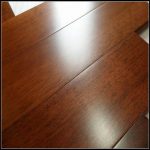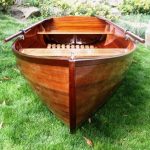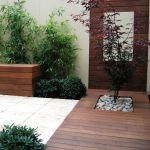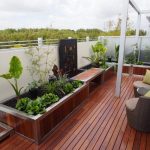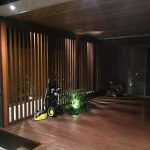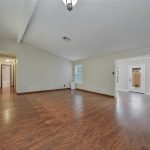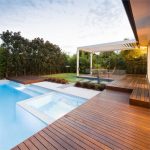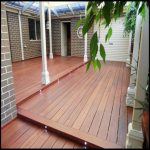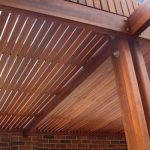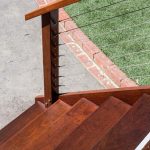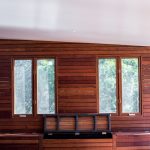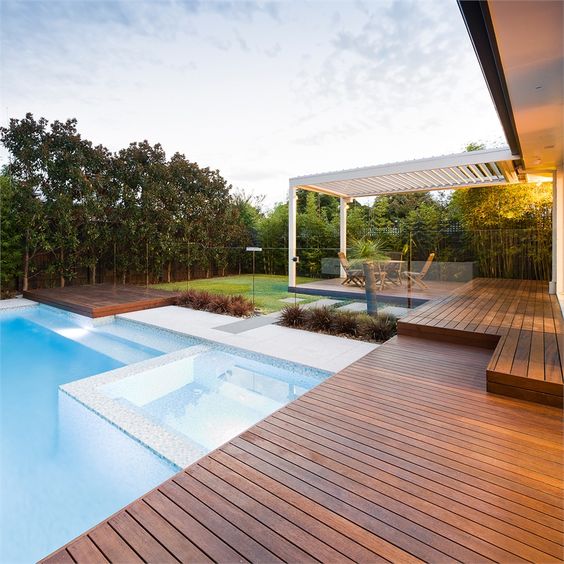
Merbau
- Botanical Name : Insia Bijuga
- Preferred Common Name : Merbau
- Species Type : Hardwood
- Other Names : Kwila, Ipil, Vesi, Johnstone River Teak or Scrub Mahogany
Merbau is a popular hardwood from South East Asia used in a wide range of applications; from construction to indoor and outdoor furniture.
Merbau is a popular hardwood derived largely from areas in South East Asia, Papua New Guinea, the Pacific islands, and northern Queensland. With its high degree of natural durability and strength it is used externally in engineering, construction and marine applications.
Merbau also features in backyards as outdoor furniture, and internally in a range of joinery, flooring and other uses.
In its natural setting in North Queensland, Malaysia, Fiji, Vietnam, the Philippines, Madagascar, Papua New Guinea, Thailand, Solomon Islands, New Caledonia, Vanuatu and Samoa, the merbau species can grow up to 40 metres in height, with a 0.6 metre trunk diameter. The bushy tree, with distinctive local names, will often form a spreading canopy.
Merbau is a versatile wood product. It is utilised for larger-scale projects and general construction, along with common use for outdoor settings and barbeque trolleys, and for joinery, flooring and fitting purposes. As it turns well and responds to hand tools it can be applied to more specialised work, such as cabinet making, musical instruments, boat building, carving and tool handles.
Appearance
In its natural setting the merbau species can grow up to 40 metres in height, with a trunk of 0.6 metres in diameter. The bushy tree will often form a spreading canopy. Once cut, the heartwood will initially appear as yellowish-brown or orange-brown before deepening to a pale to dark reddish brown. This contrasts with the merbau sapwood, which appears white, pale yellow or buff. The wood grain is variable but usually interlocked or wavy, which produces a ribbon figure on the radial surface. The timber has a coarse but even texture. It has a characteristic oily odour when cut.
Common Applications
Merbau spans a variety of uses in the fields of engineering, construction, marine and furnishings, both for the indoors and outside. It has been utilised for infrastructure projects including cross arms, bridge building, piles, sleepers, posts, wharves and mining timbers. In the construction context merbau is used in framing, decking, treads and other general needs. Many boats, particularly the decks, are made of merbau, as are a variety of vats, musical instruments and tool handles. As a furniture material merbau is prominent in outdoor settings and barbeque trolleys, as well as being valued for turning, paneling, joinery, shop fitting, cabinet making, parquet flooring, carving, veneer, counter and bench tops.
Common Form
Sawn
Workability
Merbau takes well to paint, stain and polish, however the finish can sometimes be affected by gum bleed-through or oily patches. Its vessels also contain a yellow substance that stains textiles and concrete. It turns well and is relatively easy to work with hand tools, though it can be variable when it comes to machining. It will generally cut cleanly but there may be some blunting or gumming effect on the cutting edges. Merbau tends to split unless pre-bored, but holds fastenings well.
Merbau grows naturally in South East Asia, the Philippines, Solomon Islands, Fiji and Papua New Guinea and is imported to Australia from these countries. Merbau grows in Australia in a specific region by the Johnstone River and in the Daintree area of Far North Queensland. It is often referred to as Johnstone River teak or scrub mahogany.
Flooring
Whether for structural or finished flooring applications, timber offers durability, versatility and adaptability. The warmth, strength and natural beauty of timber flooring has proved enduringly popular in a wide variety of interior settings.
Timber flooring is a timeless product, offering a warmth and natural beauty largely unmatched by other flooring options. This article provides an overview of the installation of solid timber strip flooring over bearers and joists, timber based sheet flooring products and concrete slabs. Timber flooring is typically supplied as either solid timber or laminated wood products, made from layers of bonded timber. It fits together with a tongue and groove joint and once in place, is sanded and finished. There is a wide variety of species to select flooring from and the right species for a given application will be dependent on numerous factors. Information relating to species selection, environmental assessment, finish selection and recommended maintenance routines are all provided in this section.
Joinery
Timber joinery products offer a classic, unique and stylish touch to any interior or exterior design. The products are produced for a variety of internal applications including door and window frames, cabinetry, skirtings, mouldings and architraves. When looking to the outdoors, joinery products range from decorative eaves and posts to eye-catching railings.
Cabinetry is often associated with joinery and most typically includes, cupboards, benches and other similar ‘built in’ furniture. Like joinery, cabinetry is generally specified as either paint or clear finish grade and naturally for clear finish grade timbers, appearance and surface finish are critical in achieving a successful application.
Decking
Timber decks are a practical and attractive addition to any outdoor landscape. Natural timber decks blend seamlessly with their surrounding environment and will serve as popular entertaining areas all year long.
As an external structure, carrying large loads of traffic, timber decking has high structural performance requirements. In addition decks are usually raised clear off the ground and fully exposed to the weather meaning an effective deck must be able to cope with wear and tear from repeated use and in addition discharge rainwater efficiently. Roundin the corners (easing the arris) of the decking will help run off water while spacing for ventilation between the decking boards will prevent water ponding on the deck surface.
Timber decking is available in both seasoned and unseasoned wood, in a wide range of species, sizes and grades. The natural appeal and strength of timber makes it a practical choice for outdoor decking. This guide provides an overview of best practice methods for specifying, installing and finishing a timber deck.
Stairs, Exterior
All exterior stairs serve a functional purpose, but the choice of timber in the application will turn a functional building element into an aesthetically pleasing feature. And while the construction of stairs is demanding, the investment of time will be returned, with a well constructed timber staircase typically lasting decades.
Rails and Balustrades, Interior
The versatility, beauty and strength of timber makes it the ideal material choice for interior handrails and balustrades. Treated softwood and durable hardwoods are the most popular timber choices and these can be turned to create a range of unique styles and designs to suit a variety of tastes and decors.
When used internally balustrades and handrails are typically finished with a clear lacquer to showcase the natural beauty of the timber and with appropriate care and attention will last a lifetime. Find here general information on member sizes, connections and suitable materials, as well as important considerations, for the specification and construction of interior handrails and balustrades.
Stairs, Interior
Interior staircase work is considered a specialised area of carpentry and joinery as its construction requires high levels of workmanship, detail and accuracy. Many interior stairs are built from quality joinery timber, cut and seasoned especially for staircases. Interior stairs differ considerably in design, from simple straight flights, commonly used in domestic work, to more elaborate stairs, constructed purposely as stand out features in public and commercial buildings.
The construction procedure described here applies to most general type stairs of either conventional or contemporary construction.
Pergolas
Timber pergolas offer an attractive and economical way to create functional living and entertainment areas in the outdoors. Pergolas designed with care can maximise both winter sunshine and summer shade, ensuring outdoor living is enjoyed all year round. With its natural look, durability and versatility there are few other materials that can match the advantages of timber in pergola construction.
Pergolas are typically constructed via a straightforward post and beam process, which can be attached to an existing building or form a free standing structure. A protective finishing coat will preserve the life of the pergola and a variety of paints and stains are available on the market to facilitate this.
Rails and Balustrades, Exterior
The versatility, strength and natural beauty of timber makes it the ideal material choice for external handrails and balustrades. Usually built from treated softwood and durable hardwoods these timbers can be turned to create a range of styles and designs, resulting in balusters that are unique as they are individual. Painting, staining and oil based finishes broadly cover the wide range of finishing options available and with the appropriate care and attention a timber balustrade can last a lifetime.
This guide provides general information on member sizes, connections and suitable materials to enable the construction of a long lasting, attractive and durable timber handrail or balustrade.
Windows
Timber windows are usually supplied as joinery items with a primer or base coat, as factory glazed components requiring site finishing or as fully glazed and finished windows.
Demand is ever increasing for high performance windows that promote efficient energy use in buildings. Careful window selection and placement is rightly viewed as a means of reducing demand for artificial light and climate control. Timber is an ideal material when considering these aspects as it is a material that is light, strong, natural and renewable. It can be moulded to any shape, so will meet the thermal, acoustic and design requirements of even the most unusual window.
This guide discusses the common elements involved in specifying, constructing and installing timber windows


